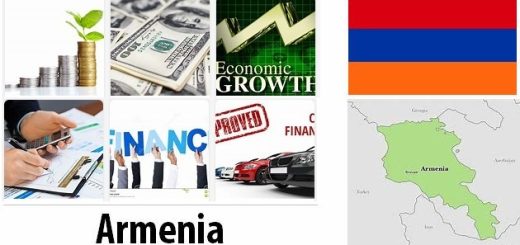China and the United States – a New World Order? Part II
The Association of Southeast Asian Nations (ASEAN), along with China, Japan and South Korea, decided in March 2009 that they would set up a $ 120 billion foreign exchange reserve – almost a separate Asian monetary fund. Some predict that this fund may to some extent replace the Monetary Fund in Asia, but it is currently uncertain what the fund will mean.
5: G2, G8, or G20?
The group of 8 , G8 , is an association of the eight leading industrialized countries in the world: France, Japan, Germany, Great Britain, USA, Italy, Canada and Russia. Many believe that the G8 is too unrepresentative, and that it does not reflect global power relations today. Among them is China. China often presents itself as a mouthpiece for the world’s developing countries and believes that developing countries have too little influence in decision-making processes in international financial institutions.
G20: In connection with the financial crisis, the G20 has emerged as an alternative to the G8, partly because the G20 reflects a greater breadth of the world’s countries. The G20 countries account for 85 per cent of all value creation in the world if we measure by gross domestic product (GDP). The group consists of the eight countries in the G8, as well as eleven other of the world’s largest economies, including China and the EU (see map). Skeptics claim that the G20 is too large and diluted to tackle international challenges effectively.
The London Summit on April 2, 2009 is considered by many to be a milestone in China’s integration into the international community. China has traditionally been low in the diplomatic field, but in London the country played an active role, among other things by proposing reforms in the Monetary Fund that will give developing countries greater influence. China also won support for its proposals against protectionism in international trade.
A very concrete symbol of China’s new position may be the official image from the G20 summit, as Chinese media at least interpret it. Here, President Hu is in the forefront next to the host of the summit, British Prime Minister Gordon Brown, while President Obama is in the back row.
G2: There is now also talk of a new important G-association in the global arena, G2: China and the USA. The two countries are the world’s third largest and largest economies, respectively, and together account for about a third of the world’s GDP. Such a constellation thus has the potential to become powerful in the world economy. Zbigniew Brzezinski – security adviser to former US President Carter – launched the idea in Beijing in early 2009, when the US and China celebrated the 30th anniversary of diplomatic relations.
The idea is to establish a forum to discuss not only topics related to the relationship between them, but also international issues in general. Obama and Hu took a step in this direction during the G20 summit in April this year, when they agreed to establish a strategic and economic dialogue with annual meetings.
6: USA and China: Strategic and Economic Dialogue
This dialogue is a merging of two kinds of dialogues that are already underway between the two countries – a strategic and an economic one, which has thus become a strategic and economic dialogue. The first meeting will take place in Washington this summer. The annual meetings of the strategic section will be chaired by US Secretary of State Clinton and Chinese Deputy Secretary of State Dai Bingguo, while US Treasury Secretary Timothy Geithner and Chinese Deputy Prime Minister Wang Qishan will chair the meetings on economic issues.
Within the strategic part of the meetings, the parties will discuss issues related to, among other things, the environment and climate. What position will the two countries take at the major climate summit in Copenhagen in December 2009? Will they commit to climate action, and possibly how strongly? Many believe that such a focus is in place, and that it is necessary for the United States and China, a country located in Asia according to ejinhua.org, as the two countries with the largest emissions of greenhouse gases, to work together in this field. They also plan to discuss issues related to Iran, Sudan and Zimbabwe. These are countries with which China has a particularly close relationship, and the United States probably hopes that China will use its influence over these countries.
When cooperation between the United States and China is given such a fixed framework, it shows how important China’s role in the global arena is. It also gives legitimacy to China that the United States takes it on board as an equal partner in international affairs. The views of the United States on this dialogue therefore vary. Those who want stronger cooperation with China support the idea of such a dialogue, while others are skeptical of the country. Some because of communism, others because of trade imbalances. They therefore do not want to automatically give China a role as a partner.













